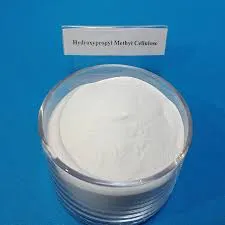
تەموز . 27, 2024 11:02 Back to list
Potential Adverse Effects and Considerations for HPMC Usage in Various Applications
Understanding HPMC and Its Side Effects
Hydroxypropyl Methylcellulose (HPMC) is a semi-synthetic polymer derived from cellulose, widely utilized in various industries, including pharmaceuticals, food, cosmetics, and construction. It is primarily employed as a thickener, emulsifier, and film-forming agent. While HPMC has many benefits, understanding its potential side effects is crucial for safe usage, especially in medicinal applications.
Common Uses of HPMC
In the pharmaceutical industry, HPMC is frequently used as a binder in tablet formulations, as well as a sustained-release agent that allows for the gradual release of medication into the bloodstream. In the food industry, it acts as a stabilizer and thickener, enhancing the texture and shelf life of various products. In cosmetics, it is often found in creams and lotions, providing a smooth application and enhancing moisture retention. Despite its widespread use, concerns regarding side effects have prompted further investigation.
Potential Side Effects
1. Allergic Reactions One of the most critical concerns with HPMC is the potential for allergic reactions. Although rare, some individuals may exhibit symptoms such as skin rashes, itching, or swelling upon exposure to products containing HPMC. It is essential for consumers to monitor their reactions when using new products that contain this compound, especially if they have a history of allergies to similar substances.
hpmc side effects

2. Gastrointestinal Issues When ingested in food or pharmaceutical formulations, HPMC can lead to gastrointestinal discomfort in certain individuals. Some users report symptoms such as bloating, gas, or diarrhea. This is likely due to HPMC's thickening properties, which can affect digestion and gut health. Those with sensitive digestive systems or pre-existing gastrointestinal disorders should approach HPMC-containing products with caution.
3. Impairment of Nutrient Absorption There is a potential concern that excessive consumption of HPMC may interfere with the absorption of certain nutrients. Since HPMC can alter the viscosity of gastrointestinal contents, it may hinder the absorption of vitamins and minerals. This is particularly critical for individuals on specific diets or suffering from deficiencies.
4. Interaction with Medications HPMC can also interact with various medications. Its binding properties may affect the release and absorption of drugs, which can impact the efficacy of certain treatments. Patients should consult with healthcare providers to ensure that the use of HPMC-containing medications or supplements does not interfere with their existing prescriptions.
5. Respiratory Issues Inhalation of HPMC dust, particularly in occupational settings, can lead to respiratory issues such as irritation of the throat and lungs. While this is primarily a concern for workers who handle the raw material in powdered form, caution is advised for anyone who may be exposed to airborne HPMC.
Conclusion
Hydroxypropyl Methylcellulose (HPMC) is a versatile compound with numerous applications across different industries, offering valuable benefits in pharmaceuticals, food, and cosmetics. However, it is essential to acknowledge and understand its potential side effects, which can range from mild allergic reactions to more severe gastrointestinal and respiratory complications. Consumers and patients should remain vigilant, monitor their body's responses, and consult healthcare professionals regarding any concerns related to HPMC usage. As research on HPMC continues, a better understanding of its safety profile will help guide its use in everyday products.
-
Why HPMC is a Key Additive in Wall Putty Formulations
NewsAug.05,2025
-
Redispersible Powder in Decorative Renders: Function Meets Finish
NewsAug.05,2025
-
Redispersible Powder for Interior Wall Putty: Smooth Results Every Time
NewsAug.05,2025
-
HPMC’s Water Retention Capacity in Dry Mortar Applications
NewsAug.05,2025
-
HPMC Factory Contributions to Liquid Detergents
NewsAug.05,2025
-
How HPMC Factory Products Change Detergent Textures
NewsAug.05,2025







